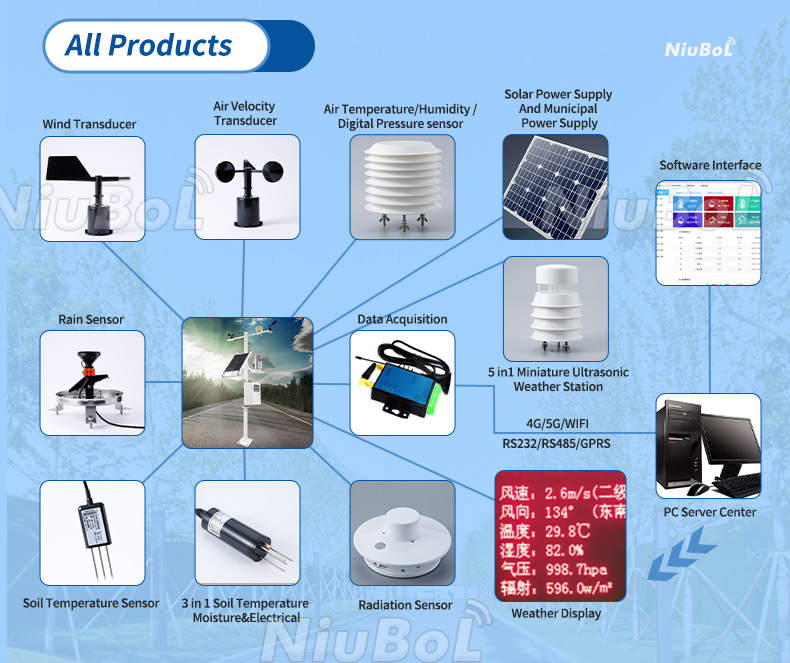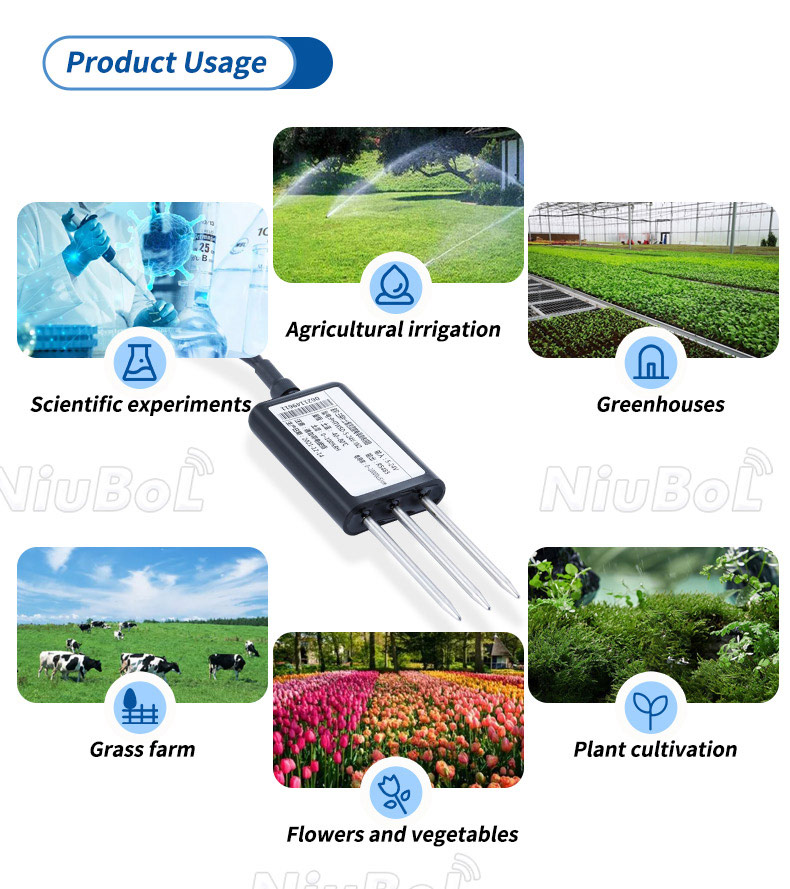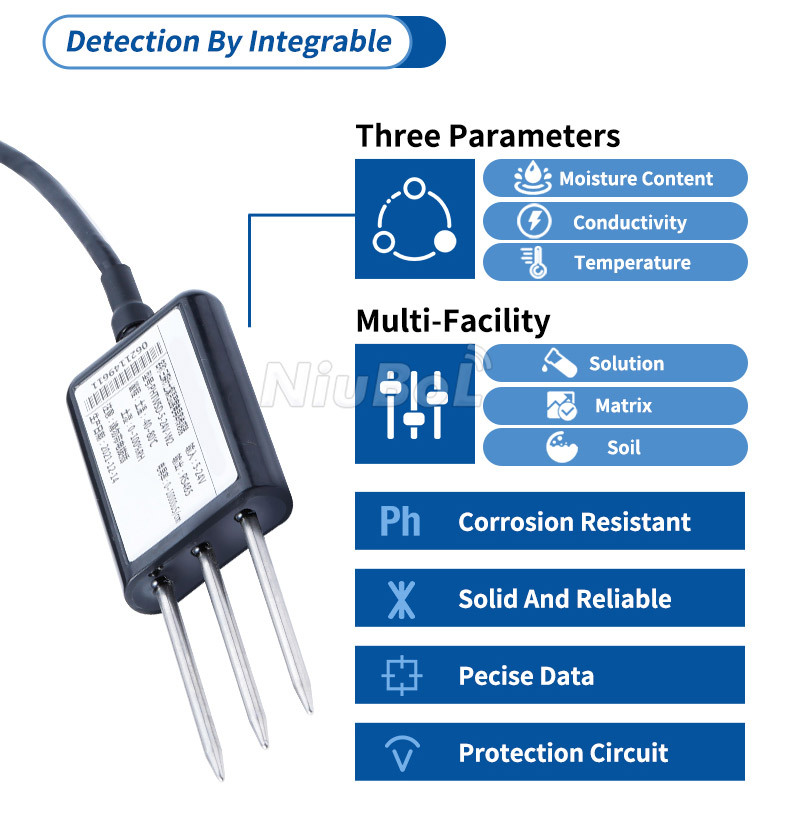

 咨询热线 15388025079
咨询热线 15388025079 时间:2022-05-18 19:57:01 浏览量:936
测量土壤湿度的方法
土壤是人类赖以生存的自然资源之一,是植物生长发育的基础。土壤环境状况与人类社会的生存繁衍息息相关。除水培植物外,土壤水是植物吸收水分的主要来源。土壤中各种肥料的溶解与吸收、有机质的分解转化等也与土壤水含量息息相关。

土壤水分的量度是土壤含水量,即水分重量占土壤重量的百分比。测定土壤含水量,掌握作物需水情况,对农业生产具有重要意义。目前,土壤水分的测量方法有烘干称重法、张力计法、电阻法、中子法、r射线法、驻波比法、光学法、时域反射法(TDR)和高频振荡法(FDR)等。其中,较常见且简便易行的方法是烘干法和电阻法。

TDR 方法:
TDR的中文名称是时域反射法(Time Domain Reflectometry),是20世纪80年代发展起来的一种土壤水分测量方法。这种方法在国外已经很普遍,在国内也是近几年才开始引进,但引进后立即受到各部门的重视。TDR时域传输是快速监测土壤水分的常用方法。其原理是,一条不匹配的传输线上的波形会发生传输,传输线上任一点的波形都是原波形与传输波形的叠加。基于TDR原理的设备响应时间约为10-20秒,适用于移动测量和定点监测。
TDR独立性强,其结果基本不受土壤类型、密度、温度等环境因素的影响。此外,还有很重要的一点:TDR可以测量冰冻条件下的土壤水分,这是其他方法无法比拟的。另外,TDR可以同时监测土壤水分和盐分含量,前后两次测量的结果几乎没有差别。该测定方法的精密度可见一斑。
FDR 方法:
FDR法的中文名称为高频振荡法,FDR的诞生时间比TDR稍晚。起初由于TDR设备成本较高,国外AquaSPY、Sentek等公司为了寻找比TDR更简单的方法测量土壤介电常数而开发了FDR;FDR不仅比TDR便宜,而且测量时间更短,经过特定的土壤校准后,测量精度高,探头形状不受限制,可同时测量多个深度,数据采集更容易实现。
FDR法采用电磁脉冲的工作原理,根据电磁波在介质中的传播频率,测量土壤的表观介电常数,从而得到土壤体积含水量。

干燥方法:
烘干法是测定土壤水分极为常见且标准的方法。具体为:从田间取得一定量的土壤,然后放入105℃的烘箱中等待烘干。其中,烘干的标准是前后两次称重不变,烘干后损失的水分即为土壤含水量。计算公式为土壤含水量=W/M*100%,M为烘干前土壤重量,W为土壤含水量的重量,即M与烘干后土壤重量M'之差。
抵抗方法:
电阻法是利用石膏、尼龙、玻璃纤维等材料的电阻和它们的含水量。当这些中间体加上电极放在潮湿的土壤中,经过一段时间后,这些东西的含水量达到平衡。由于电阻和含水量的关系,我们事先标定了电阻和百分比之间的某种对应关系,然后通过这些元件,我们可以得到吸力在1到15个大气压范围内的水分读数。
烘干法测量的数值准确,但缺点是实时性较差。如果想要快速测量,可以考虑土壤温湿度传感器。土壤温湿度传感器有两种监测原理:时域反射法(TDR)或高频振荡法(FDR),可以实时提供更准确的土壤水分含量。
土壤水分监测现在不仅仅用于农业土壤水分检测,在铁路、公路、水电站、渠道、房屋等很多工程建筑中,土壤水分状况也是必不可少信息。当我们需要准确的数据和足够的时间时,可以选择传统的烘干法。如果想实时了解土壤水分,可以选择土壤水分传感器(TDR/FDR)。
上一页:土壤水分监测与管理系统
下一页:湿度传感器选择
相关推荐
相关产品